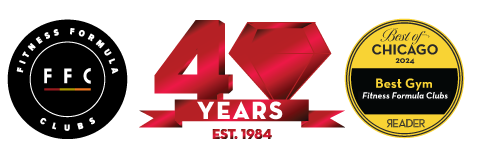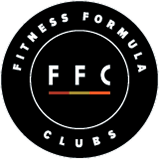Breaking Up Your Daily Fitness
As a technology and fitness professional, I have the pleasure of seeing two different worlds. On one end, I see the rapid rate of my Outlook inbox filling with email requests. On the other, I’m reading body language for proper form and signs of muscle fatigue. What’s interesting is how much these worlds can benefit from each other. I’ll give you an example from each side so it doesn’t seem like I am biased.
Technology: If I had a dollar for every time someone told me “I don’t have time to work out,” I would be retired. What I’ve learned since incorporating a health and wellness practice is that my productivity at work has sky rocketed. I’m able to do more with less without breaking a sweat (no pun intended) because my mind and body are optimized before logging into work.
Fitness: One of the first questions I ask my clients and the people closest to me is, “How did you sleep?” Most people respond with “Fine,” but how do we really know? There are many technology companies in the market that will track sleep, but based on feedback from clients, it’s either they don’t want to wear a device, don’t want to know the real answer or don’t care. Leveraging technology that will measure your specific metrics can tell you how ready your body truly is for that specific day.
As we wrap up week four of isolation, I’ve noticed that clients of mine have either accepted this “new normal” or have fallen off the band wagon of their fitness routine. We don’t know if another three weeks will be the end of isolation, but what I do know is that this is a new week to change it up.
I am an advocate for volume based training. Volume can be defined as repetitions (reps) multiplied by sets. With that being said, if you’re cramming too many reps and sets in a constrained time window, you’re setting yourself up for an injury. I have recently implemented a change in my fitness routine where I break up my long workout into three smaller sessions throughout the day.
High Level Overview:
• Morning – Light Cardio, Core, and Mobility (20 – 40 minutes)
• Afternoon – Strength Training (30 – 40 minutes)
• Evening – Yoga and Meditation (5 – 10 minutes)
Morning:
I am firm believer that the way you start your day will impact the rest of your day. The beauty of being a fitness professional who is also in corporate America is that I know the cognitive benefits of a morning workout. I recently read the book Make Your Bed, where I found connections to my morning routine. One of the messages from the book was that by making your bed first thing in the morning, you gave yourself the satisfaction of already accomplishing something that day. For me, fitness has become that morning ritual. When I complete my morning session I have accomplished something and am ready to take on corporate America. It not only prepares my body but my mind to think clearer, sharper and be fully optimized.
As for a workout, I believe in leveraging the morning to wake up the body and soul. I do this with mobility work and a light run outside while the sun is rising. For non-runners, you can go for a walk or bike ride outside to begin the day. This will promote blood flow throughout your body and naturally elevate your heart. Not to mention, if you’re doing this as the sun rises or after the sun rises, you’re taking in Vitamin D, which is highly recommended by the CDC right now.
I’ll follow up my cardio session with core exercises to stimulate the muscles in my torso. I’ll push for 4 different kinds of exercises focused on each area of the core (Rectus Abdominus, External Obliques, and Erector Spinae). Once completed, I’ll head to the shower and begin my day job in the technology world.
Afternoon:
There are numerous studies that have proven that taking breaks throughout your day will optimize your productivity. We all know that person who doesn’t believe in breaks and may receive a high five for self discipline, but I like to lean on the side of science. Implementing a short workout in the middle of work will not only break up your day, but redistribute blood flow from sitting all day.
I feel like there is a false perception around working out in that you need to do all of this preparation and put high strain on the body in order for it to be called a “workout.” That simply is not the case, and there are many options for re-awakening the body without having to drink your sixth cup of coffee for the day.
Whether you have a home gym, kids or neither, you can still find a way to redistribute blood flow and activate those muscles. If you’re fortunate enough to have a home gym, I recommend 3 – 4 sets of exercises focused on the lower or upper extremities depending on the day. You could also do a circuit based session which can hit all areas of the body.
If you have children, I recommend going outside with them and playing a game. You could view this as recess time, and you also get additional family time which you normally wouldn’t have from working in the office. If you don’t have a gym or kids, you can go to resources like FFC On Demand to give you bodyweight workouts.

Evening:
To wrap up the day, I focus on minimizing distractions such as TV, social media or email. Studies have shown that blue light from screens delay the production of natural melatonin. Melatonin is generated within the pineal gland that signals to the body when it’s time to go to sleep. If you’re in bed with a laptop or device, you may not be getting the sleep your body needs in order to be ready for the next day.
This is an area I feel most members of corporate America don’t think about but could benefit from tremendously. The reason why this is important for corporate America is because of a type of sleep called rapid eye movement (REM) sleep. The best way to think of REM sleep is your dream sleep. One of the main benefits of REM sleep is that it’s the mind’s way of refreshing for the next day. It can viewed as the memory consolidation phase of sleep so your brain is more cognitive for the next day.
As it pertains to fitness, I take this time to down regulate my body and soul. I do this with yoga and finish with meditation. For me, I will leverage yoga as time to focus on static stretching to help with muscular recovery. I tend to focus a lot on my lower back, hip flexors, and shoulders. These are commonly tight areas for corporate America as we sit at a desk and lean into the computer screen. From a soul perspective, I will do transcendental meditation which is meditation in silence. I’ve found this works best for me as the day is full of noise.
Final Thought:
Fitness is not only a way to build muscle but also a way to provide structure in your day. It gives purpose to a dedicated time. We can’t control how long we are told to stay at home, but we can make the best of it. I encourage everyone to find what works for them and make the best of this “new normal.”


Post written by FFC Contributor Omar Romero.
Omar is a fitness enthusiast based out of the Chicagoland area. As an FFC group fitness instructor, his focus is around functional fitness mixed with high intensity interval training. His personal philosophy is based on hard work and no excuses. For more information, tips and articles from Omar, visit his website: OmarRomero.com.


